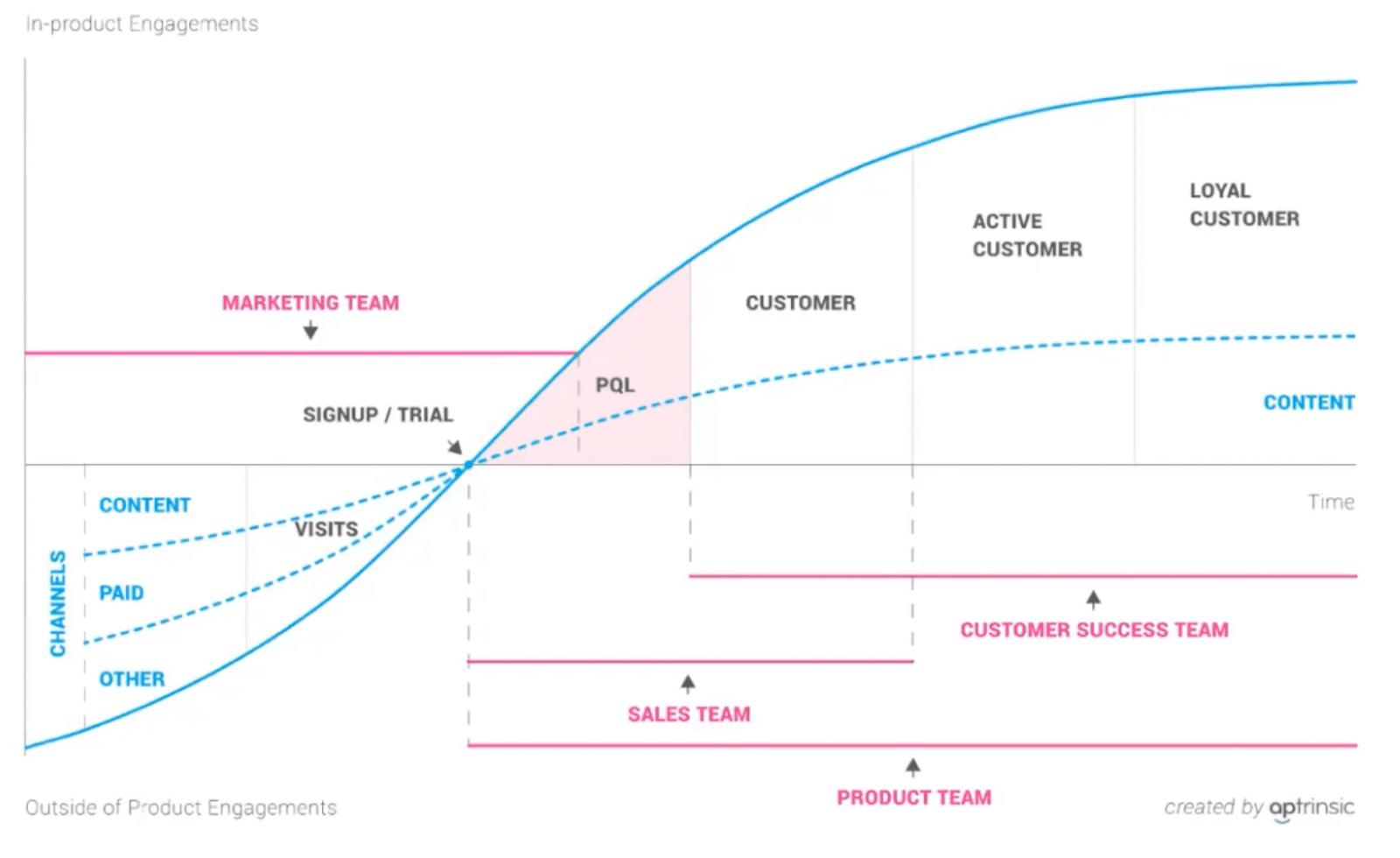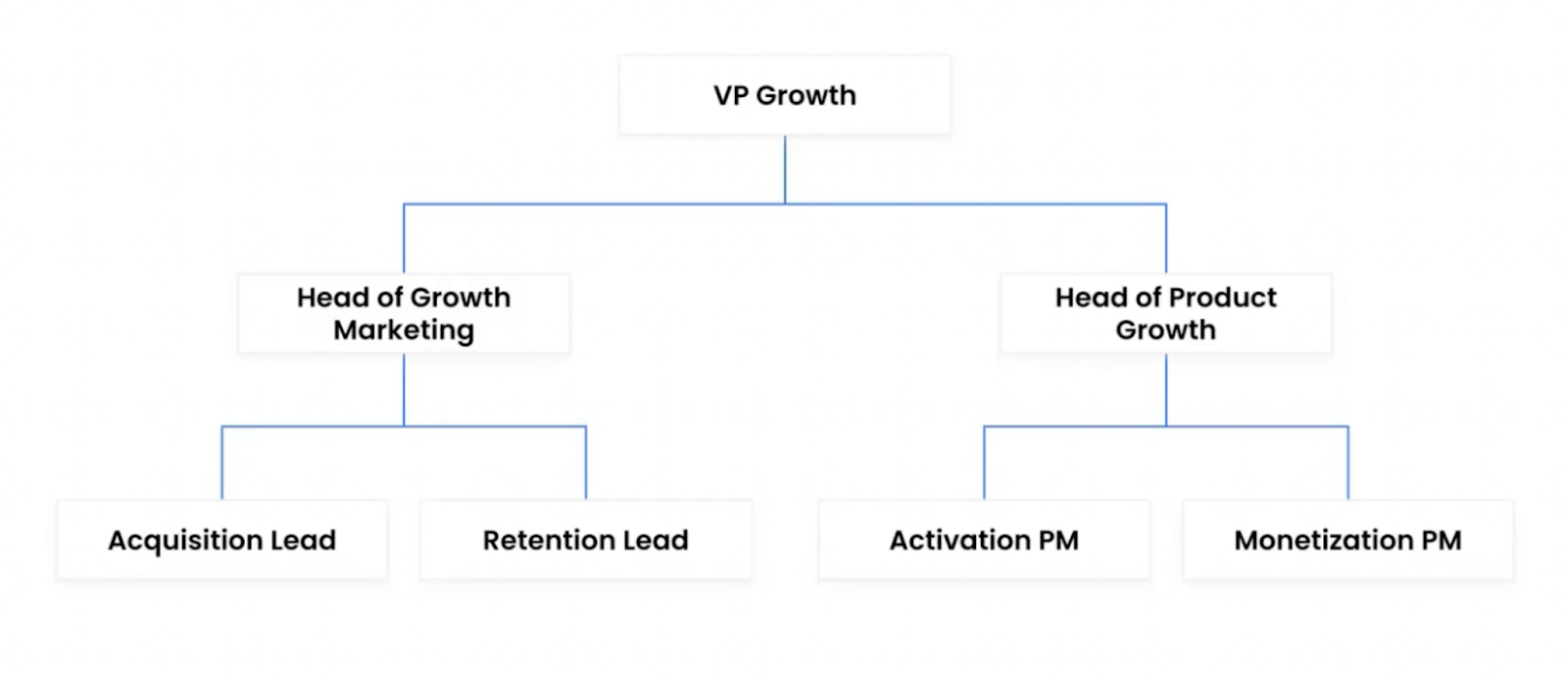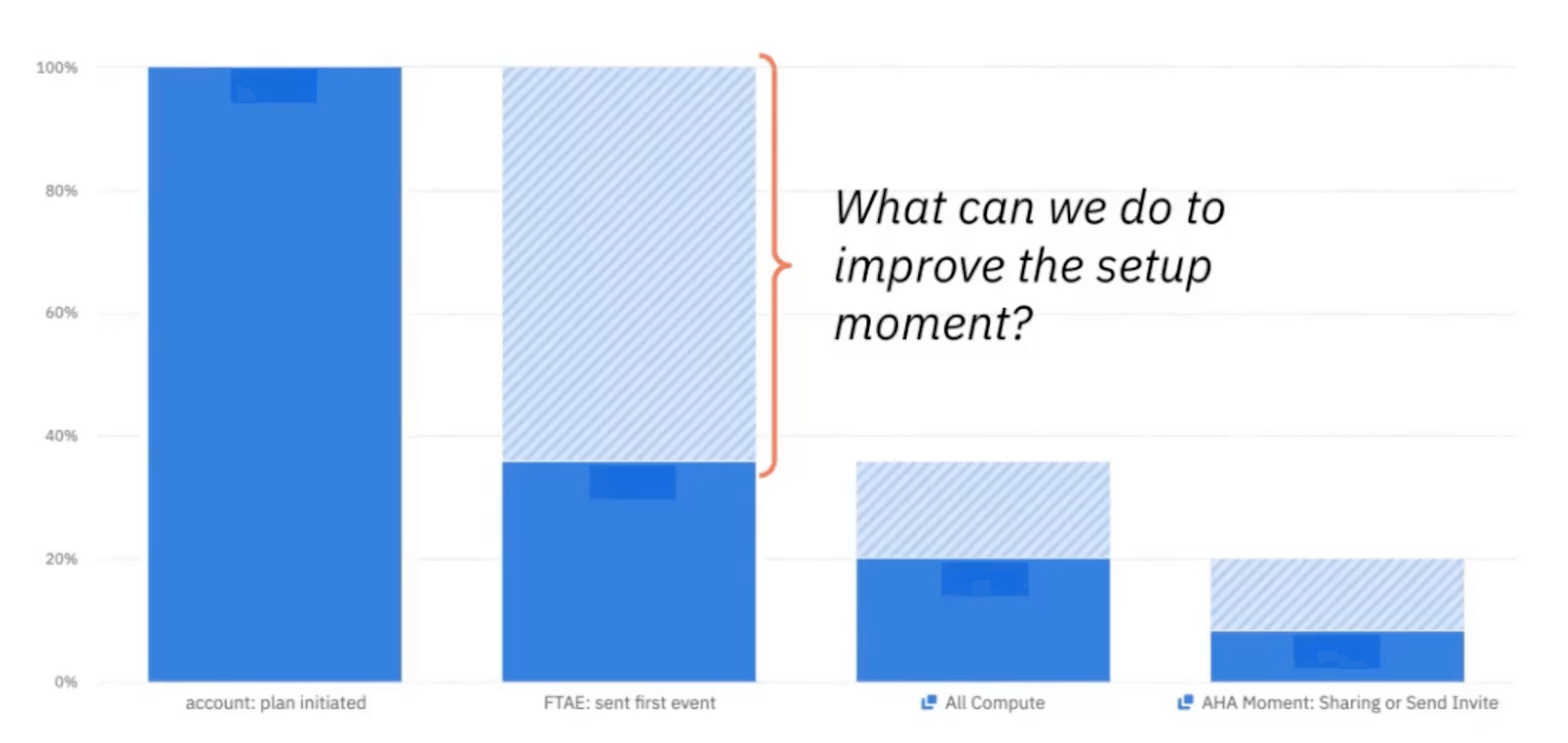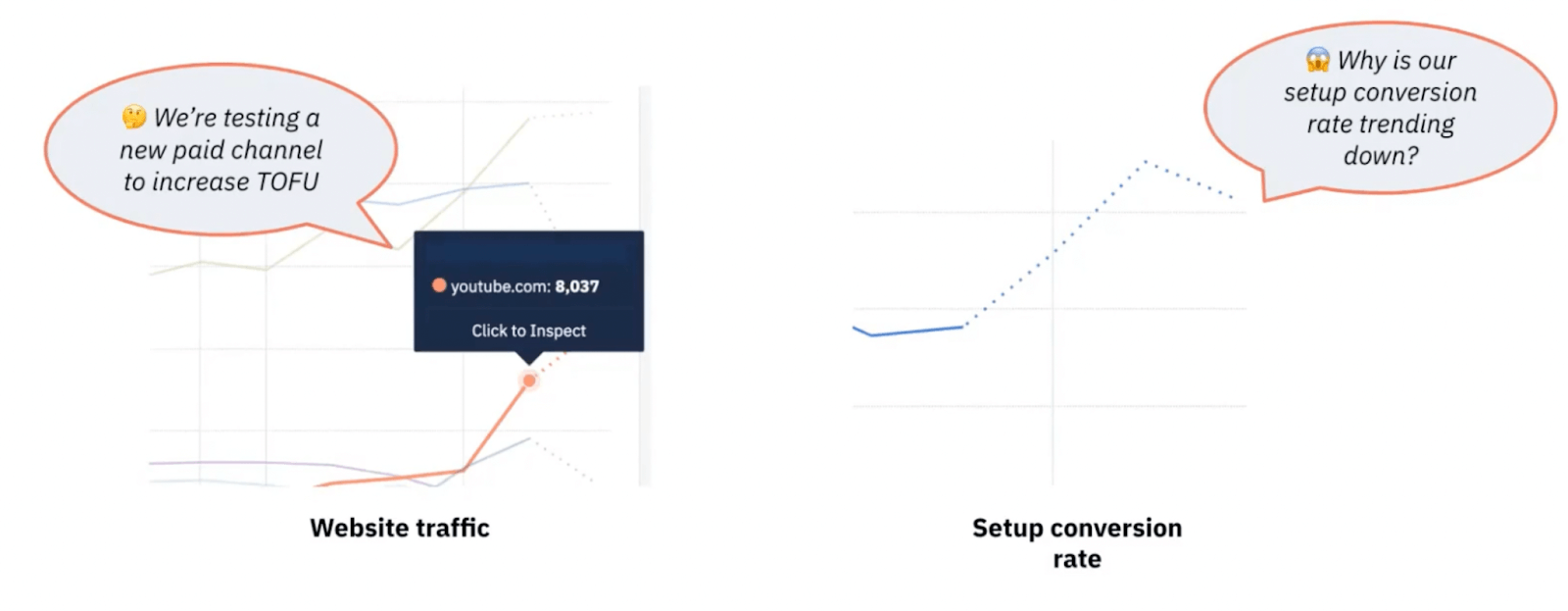Embarking on a journey of growth involves more than just individual prowess – it's about the dynamic duo of product and marketing joining forces in perfect harmony.
In this article, we unravel the intricacies of how these two powerhouses can synergize to propel growth to new heights. Forget the silos; it's time to foster a symbiotic relationship where product innovation and strategic marketing seamlessly converge.
What is product growth?
Essentially, growth allows for successful product distribution through acquisition, retention, and monetization to create a predictable, sustainable, and competitive system.
Let's focus on the distribution component.
We've gone from a very sales-led motion with fancy steak dinners and on-prem solutions that took months to implement to this second era of marketing-led growth, inbound marketing, software in the cloud, lots of upfront sales, and marketing to convince the user to buy this product
We want to try the product before we buy it. We want to see value from the product, and we’re expecting to be able to do that today. We want to sign up, test it out, and find out if it works for us.
The end user now has a lot more power than they did in the past. Before, they were just told what product the exec or CIO was buying for them. Today, it's really more of a bottoms-up buying process where users try and test products and tell their manager which tool they want to go with, and that's how that works.
What is product-led marketing?
In the past, marketing did the marketing, sales did the selling, and product did the product at the end. It was marketing, sales, product, or maybe it was just sales and product or marketing and product.
But now we're in this world where marketing, sales, and product teams overlap. We have this whole phase where the user lands on the website and signs up for a free version of the product or a trial. And during that time, there's overlap between what the marketing team can do to activate and convert, what the sales team can do, and what the product team can do.
So alignment and collaboration across these functions are more important than ever.

What is product-led growth?
Product-led growth is this crazy buzzword. Everyone’s talking about it, and it's the only way to make it in the world of SaaS right now. You hear it all the time. There's a ton of confusion out there about what it actually means. How does the product drive growth? What are we talking about?
What’s really helpful is to think about it across the customer journey. Is the product driving growth on the acquisition side? Is it driving growth on the retention side? And is it able to drive growth as a lever in the monetization process?
Here are a few examples to explain.
Calendy
A company like Calendly has a product-led motion across each of these stages in the journey. When someone sends you a Calendly link, and you use it for the first time, there's a prompt for you to go and set up your account for yourself right when you’ve scheduled your first call. That's a great loop using the product to acquire additional new users, so it's a product-led acquisition loop. Calendly is lucky because that's not something that all products have out there. It's not the product necessarily driving acquisition.
Calendly also has a product-led activation journey, and it's super easy to get started. They have habit loops built into the product to continue to have you come back and schedule more meetings. They also have the ability to monetize you without any human intervention; they have self-serve options for people to just put down a credit card and get started.
Amplitude
Another example is Amplitude. They have product-led acquisition loops for existing accounts and users to invite more of them into an existing account, but right now, they don't have a way for the product to drive new users into the product. They rely on marketing loops like paid and organic to drive users into their product in the first place.
On the retention side, they activate users and engage them over time by being largely product-led, at least for their free plan. With their paid plans, they're actually very sales and marketing-led on that front. But looking at their free plan, if you want to get started for free, they have a help center and onboarding embedded into the product experience, and that's how they get you to activate and also to come back.
On the monetization side, they're pretty sales-led today. If you want to pay for Amplitude and upgrade, the only way is to talk to a sales representative and go through that sales process.
Salesforce
As a last example, a company like Salesforce is pretty sales and marketing-led across acquisition, retention, and monetization, and not really leading with the product or having the product do the heavy lifting for them. They rely on a lot of humans in the loop and marketing-driven activities.
Product-led marketing strategy
How should you structure your growth teams for successthat ? There are so many ways that you can do that.
You can have a cross-functional setup, you can have embedded teams, or you can have a fully autonomous growth function like the example below. Here we have a VP or some C, G, O, and that has a Head of Growth Marketing and Head of Product Growth reporting to them and owning their growth function end-to-end.

When that's the case, usually the VP Growth is responsible for self-serve revenue, and that's the key metric that they're held accountable for. It's a good model that works in a number of companies, an example being Postman.
You can spend a lot of time configuring your team and figuring out how to set up the org structure and who to report to. That doesn't matter as much as long as you act as one team. And that's where the next part comes in.
Product marketing metrics
It's all about defining and aligning your metrics across the customer journey and then collaborating on those together.
Let's look at Amplitude again. Across the product growth team and growth marketing team, they're really aligned on three metrics.
One is on the acquisition side, being new relevant signups. They care deeply about getting new users into the product, and that's where they spend a lot of their time, through organic, paid, optimizing their website, and getting all those channels in order so they drive high-quality traffic into their product.
On the retention side, their North Star there is weekly consuming orgs. They also have a few adjacent metrics around their setup moment. Can someone connect a data source activation, and does someone reach an ‘aha’ moment as part of activation also?
For the last one, the monetization metric they are all aligned around is the free-to-paid conversion rate. Amplitude has a free plan, and they care a lot about moving the needle on getting more of their free accounts and users to pay for Amplitude.
So again, both the growth marketing team and the product growth team are working together. Even the sales team is too, because they care deeply about that metric as well, which is great. They come here together to increase that as a team.
So once you have your metrics and you start tracking them, below is a slightly obscured version of the activation funnel chart at Amplitude.

You can see here, that by starting to map that out, a team can come together and chat about what the biggest opportunities are for them. And in this case, it's pretty obvious, right? There's a setup moment where they see a huge drop in conversion rate; setting up Amplitude can be extremely hard.
So how they work generally and how they align every quarter is that they find these areas of opportunity. And then they come together to decide what they want to do to improve them.
When teams come together and share metrics, there's a lot less room for confusion, misalignment, and working against each other.
Here are some more obscure Amplitude charts, but you may or may not find this scenario familiar.

On the marketing side, they're testing new channels, and are driving a lot of traffic from YouTube, which saw a big bump in the last few days. They're just testing things out. They want to see what can drive users into the product, where they get the highest numbers, and the lowest cost per lead. They found out that YouTube can drive this traffic to their website.
But then, on the other hand, maybe the setup conversion rate is going down. If they didn't care about setup conversion rate, ‘aha’ moment conversion rate, or weekly consuming orgs, they'd just be optimizing for web traffic and new signups while the product growth team would be asking, “What’s going down? Why’s our conversion rate declining, and what’s changing?”
So by having the same metrics, they'd probably switch off YouTube very soon if they continued to see that their setup conversion rate declined. This would potentially tell Amplitude that this wouldn’t be the best quality traffic and that they should try something else, or to maybe direct these users from YouTube to something other than their product in the first place.
So this is a real-life example from Amplitude where they came together, and quickly understood what was going on, what they had to change, and how different initiatives affect their shared metrics in different ways.
Teamwork is essential to product-led growth
Product-led growth is about putting the product forward, front, and center, and investing in features and functionality that can drive growth, adoption, and monetization.
But it's not a product team-only endeavor. Marketing team is heavily involved in every stage of this customer journey, from acquisition to retention to monetization. Even your sales team should step in across acquisition, retention, and monetization.
So what’s framed as the product selling itself or the product driving acquisition, maybe that's something you're lucky to have in your product. But if you're not, then it's really a team effort, having the whole company align around these key metrics and work to improve them together.




 Follow us on LinkedIn
Follow us on LinkedIn



